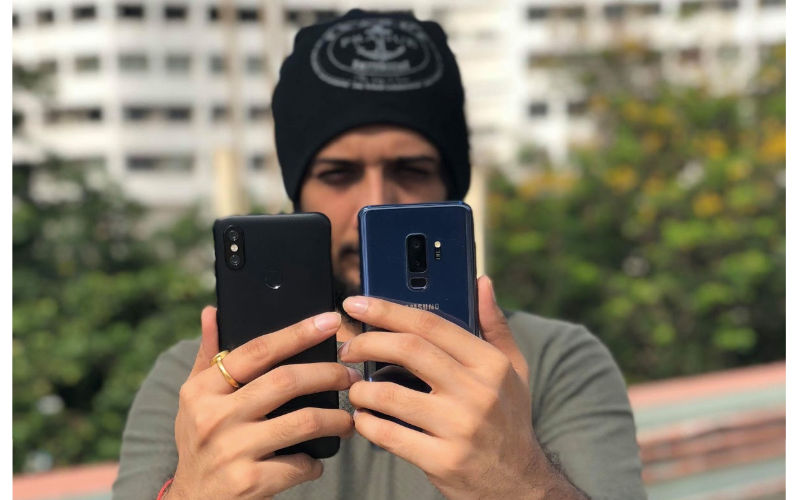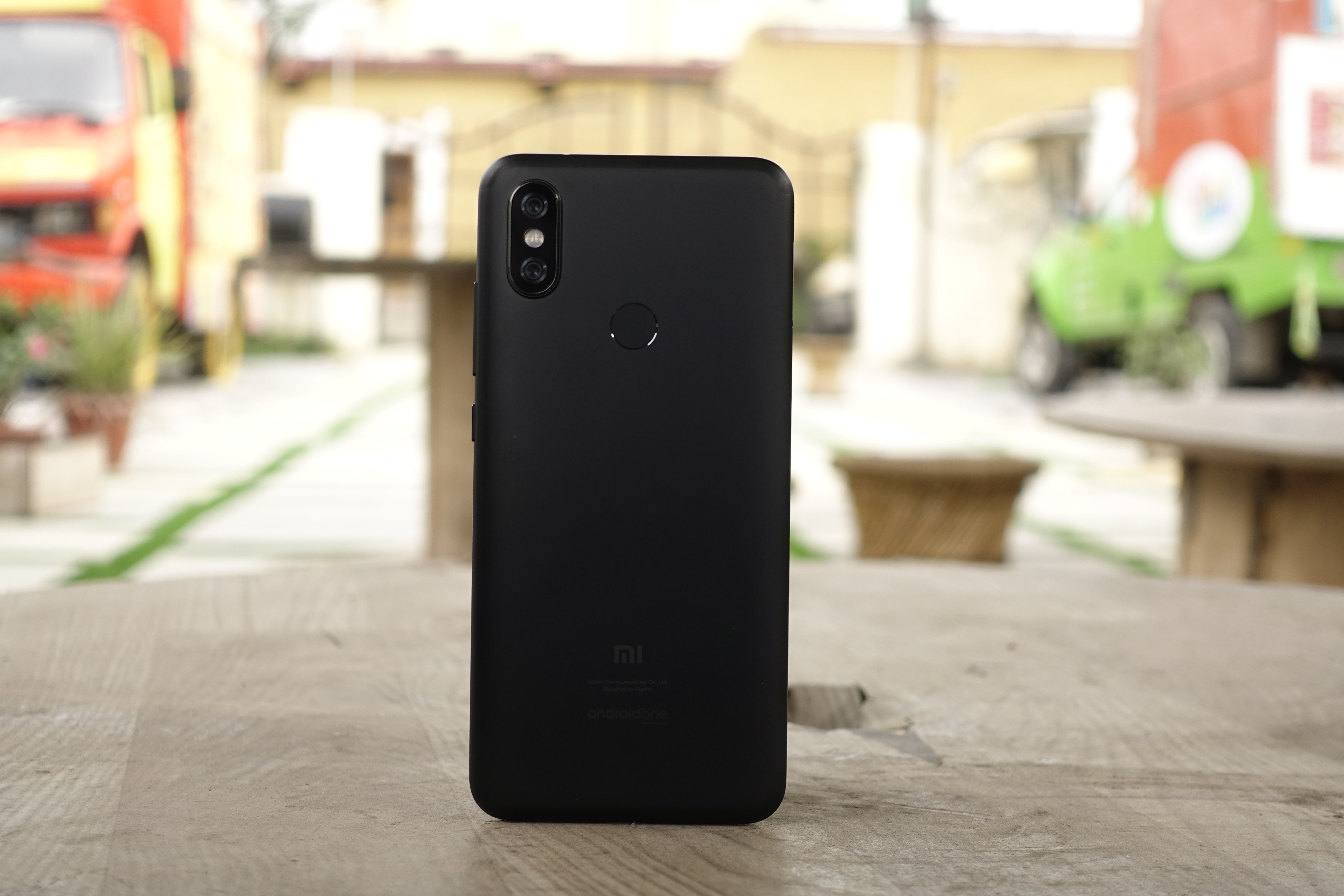

Xiaomi has been churning out some really good phones over the past few years. While its phones offer great all-around performance, it has been often criticised for offering average camera performance in its high-end smartphones. It came back with impressive cameras on its recent high-end smartphones such as the Mi MIX 2s and the Mi 8. Now, the company claims that its new Mi A2 offers the best camera in the mid-range smartphone segment.
The Mi A1 (Review), which was released last year, had great camera performance to begin with. The Redmi Note 5 Pro (Review) impressed the whole nation with its cameras, too. Ever since the Mi A2 was announced, people have been going gaga over its cameras. So, for its camera review, we decided to do something different. Yes, everyone already knows the cameras on the Mi A2 are awesome, at least for the price. But how good are they and how do they compare to a phone that’s priced almost FOUR times in comparison? Today, we’ll be reviewing the Mi A2 camera image quality and see how well it stacks up against the Samsung Galaxy S9 Plus (Review).
Xiaomi Mi A2 Camera Review: Hardware, Specifications
 Let’s quickly start off by going through the specifications. The Mi A2 comes with a dual-camera setup at the rear, with a primary 12MP Sony IMX486 sensor; with 1.25μm pixel size, and a large ƒ/1.75 aperture. The secondary camera is a 20MP Sony IMX376 sensor; again with ƒ/1.75 aperture lens, but this time with an effective pixel size of 2.0μm, thanks to 4-in-1 pixel binning technique, which helps capture more light. Both these camera sensors come with phase-detection autofocus (PDAF) capabilities. There’s a single-color temperature LED Flash to aid low-light photography.
Let’s quickly start off by going through the specifications. The Mi A2 comes with a dual-camera setup at the rear, with a primary 12MP Sony IMX486 sensor; with 1.25μm pixel size, and a large ƒ/1.75 aperture. The secondary camera is a 20MP Sony IMX376 sensor; again with ƒ/1.75 aperture lens, but this time with an effective pixel size of 2.0μm, thanks to 4-in-1 pixel binning technique, which helps capture more light. Both these camera sensors come with phase-detection autofocus (PDAF) capabilities. There’s a single-color temperature LED Flash to aid low-light photography.
On the front, there’s the same 20MP Sony IMX376 sensor, this time mated to a ƒ/2.2 aperture. The front-facing camera also features the 4-in-1 ‘Super Pixel’ pixel binning technology, resulting in large, 2.0μm pixels. However, that also reduces the resolution of images, at just 5MP. Good news for selfie lovers: the Mi A2 comes equipped with a 4500K soft-toned LED flash as well.
Coming to the software side of things, despite running a stock version of Android, the camera app on the Mi A2 is one thing that is Xiaomi’s own. As is the norm these days, it comes with background blur bokeh effect in the Portrait Mode. Other features include HDR Mode, Burst Mode, Face Recognition, AI Beautify 4.0, etc.
The front-facing camera comes with its share of bells and whistles, too, with AI-powered semantic segmentation, AI-powered Beautify 4.0, HDR Mode, Face Recognition and AI-powered Portrait Mode (of course). The camera app itself feels a bit confusing, to be honest. There’s a dedicated button to switch between the front camera and the rear camera. Camera modes can be accessed by swiping left or right. There’s also a ‘Short Video’ mode which captures Snapchat-esque 10-second video clips.
The ‘Settings’ option in the Camera app displays settings for just the selected camera mode. For example, if you’re in ‘Photo’ mode, you can’t see the video resolution settings. The UI flow takes some getting used to, and on multiple instances, I found myself blindly searching around the settings options to find what I was looking for.
There’s also a full Manual Mode for the rear-facing camera, and it lets you take full control by tweaking camera settings like aperture, shutter speed, white balance and ISO. You can also manually switch between the primary and secondary camera lens, which according to Xiaomi, aids in low-light situations. Again, this is a bit confusing, and I believe that adding a simple toggle to switch between primary and secondary sensors would have made the feature a lot more useful. For what it’s worth, you’re better off using the Mi A2 camera in its Auto Mode. I found the images from the Auto Mode to be better.
Coming to the video capabilities, The Mi A2 misses out on 4K video recording at 60fps, but it’s criminal to ask this capability from a mid-range smartphone even when many high-end smartphones are incapable of the same. What it does support, however, is 4K video shooting at 30fps, 1080p video shooting at 30fps or 60fps, and also 720p video recording at 30fps. There’s also support for Time-Lapse videos and Slow-Motion videos (but only at 120fps in 720p resolution). The Mi A2 doesn’t have OIS but it does come with Electronic Image stabilization (EIS) for videos. However, it must be noted that video stabilisation only works well at Full HD settings (and not 4K) and it’s only effective in good lighting conditions, as low-light scenarios seem to give away the stabilisation; thanks to moving lights.
Xiaomi Mi A2 Camera Review: Low-light is the Enemy
I’ll be as straight-forward as possible. The Mi A2 cameras does exceptionally good in well-lit situations. The colours look nice, the details are sharp enough and the dynamic range is pretty commendable. The Portrait Mode works wonders, too, and the edge detection and background blur is one of the best I’ve seen in a mid-range phone. The story repeats for the front-facing camera as well. I absolutely love the portrait mode on this thing, and the AI Beautify mode works well enough to make your skin tone look even and your selfies look social media-ready, straight out of the camera app.
The low-light performance of the front-facing camera is great, too, with a dedicated selfie flash ensuring you’d never have to compromise on a good selfie. The low-light performance on the rear-facing camera, however, is kinda confusing. The primary 12MP camera churns out decent looking shots in the Auto Mode. However, if you use the manual mode to switch to the ‘low-light’ lens, the results are less impressive. The secondary lens does pull in a lot more light than the primary lens, but it also makes the image a lot noisier than the results you’ll get from the primary lens.
Here are some sample shots I took from the Mi A2 rear cameras:
Coming over to some shots taken using the front-facing camera:
Xiaomi Mi A2 Camera Review: Challenging The King Of The Hill, The Galaxy S9 Plus
Now that we’ve established the fact that the Mi A2 indeed has great cameras, at least for its price, it is time to see just how great it is against a much pricier rival. For this section, I took out my personal daily driver, the Samsung Galaxy S9 Plus, and decided to take it head-to-head with the Mi A2. Let’s take a look at some of the pictures captured using both phones, side-by-side, and try to understand which is better and why.
Xiaomi Mi A2 Camera Review: Conclusion
To say that the Mi A2 has good camera performance is probably understating it. The front-facing camera on this thing is a beast, matching those on the phones that cost twice or even thrice as much. The rear-facing camera setup is brilliant as well, but only in well-lit conditions. While it manages to keep the pace during low-light scenarios as well, it definitely can’t match the combination of optical image stabilisation, better ISP, wider aperture, and more mature image processing algorithms found in costlier smartphones such as the Galaxy S9 Plus.
The biggest gripe that we have with the rear-facing camera is that the second lens and its low-light performance is not that great. We can definitely see a lot of noise compared to images captured using the Galaxy S9 Plus in similar conditions. Barring that, the Mi A2 delivers on every front and gives you probably the best cameras on a phone under the Rs. 25,000 mark. If you need anything better than this, only the Asus Zenfone 5Z (Review) and the OnePlus 6 (Review) come to my mind, both of which are priced at about double the price as that of the Mi A2.
So that’s it for our camera comparison review of the Xiaomi Mi A2. If you’re looking for a budget phone with camera quality as your primary concern, I would suggest looking no further than the Mi A2. However, we can clearly see that higher-end phones such as the Galaxy S9 Plus can capture much better images, resolving a good amount of details without ruining colours or details in highlights or shadows. Such phones can also record 4K videos at a buttery-smooth 60fps rate.




























